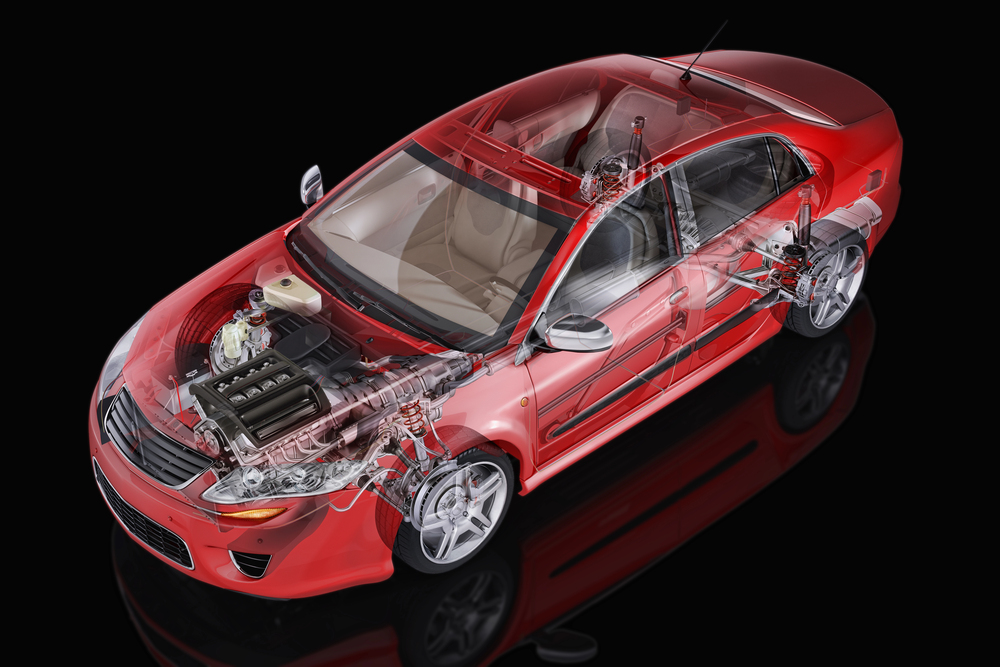What happened to new car engine and transmission options?
Valerie Raskovic
May 20, 2025
In recent years the landscape has been shifting somewhat drastically in the automotive industry. One of the most noticeable changes is the reduction in the variety of engine and transmission options available in new cars. Keep in mind, not too long ago you could buy an exact make and model vehicle with various drivetrain options, including powerful V8s or economic 6-cylinder engines. A recent example is a Jeep Grand Cherokee WK2, which was available with an option of 2 powerful gasoline-powered V8s, a V6 and even a diesel option. However, with the new generation of the Jeep Grand Cherokee, your options are limited to just 2, which are the 3.6L V6 (from the previous generation) or a 2.0L 4-cylinder Hybrid (4xe). There is no indicator as of the current time if Stellantis, Jeep’s parent company, will ever bring the V8 back for the Jeep Grand Cherokee.
Cost-Cutting and Legacy Costs
This is not just a trend of replacing V8s with smaller turbocharged or hybrid drivetrains; it is a trend that limits options in favor of various cost-cutting measures. Keep in mind the high-tech infotainment and safety tech comes at a significant cost to the manufacturer, so the need to fund new features and adapt to evolving consumer preferences it amongst their top priorities. As a result, the once-diverse array of drivetrain choices is giving way to a more standardized approach with significant implications for the future of car buying.
One of the seldomly discussed driving forces motivating automakers to cut costs due to increasing financial pressures is legacy costs. These costs are made of non-production related expenditures such as employee pension obligations and healthcare benefits for retired workers. As a lot of the well-established brands are getting older, their legacy costs continue to rise. Further exacerbating the problem are the rise of healthcare, insurance premiums, inflation and an uncertain economy.
As the legacy costs continue to increase, so are the costs associated with developing and implementing new technologies, particularly in infotainment systems and safety features. To manage these expenses, manufacturers are streamlining their engine and transmission offerings. By using a smaller number of modular platforms, they can save on development and production costs, channeling those savings into more advanced features and technologies.
According to a report by the Center for Automotive Research, the average cost of developing a new vehicle platform can exceed $1 billion. By reducing the number of unique engine and transmission variants, automakers can spread these costs over a larger number of vehicles, making it more financially viable to invest in cutting-edge features.
Changing Consumer Demands
One other factor affecting the overall desirability of certain drivetrains is their overall efficiency, fuel economy and environmental impact. Due to increased fuel prices, consumers are flocking to more efficient hybrid vehicles and EVs. While there will always be enthusiasts looking for more traditional options, the majority of consumers are not putting more emphasis on vehicle tech, efficiency, safety and value.
To meet consumer demands and address the need for cost efficiency, manufacturers are increasingly turning to modular platforms. These platforms allow for the same engine and transmission to be used across multiple vehicle types, from compact sedans to full-size trucks. Minor modifications and software adjustments can tailor the performance to fit different applications.
For instance, the Ford F-150 and the Ford Escape both use variations of the same 2.3-liter EcoBoost engine. The engine's performance is adjusted through software and minor hardware changes to suit the specific needs of each vehicle. This approach not only reduces development and production costs but also simplifies the supply chain and maintenance processes.
The Death of the V8 and Manual Transmission
One of the most significant casualties of this trend is the V8 engine. Once a staple of performance and luxury vehicles, the V8 is becoming increasingly rare. For example, Ford has phased out the V8 in most of its car lineup, reserving it for high-performance models like the Mustang. Similarly, General Motors has reduced its V8 offerings, focusing on more efficient and modular engine designs.
The manual transmission is also on the decline. According to data from the National Highway Traffic Safety Administration (NHTSA), less than 1% of new cars sold in the U.S. come with a manual transmission. Automakers like BMW and Mercedes-Benz have all but eliminated manual options from their lineups, citing low demand and the higher cost of production. Additionally, the manual transmission cannot be smoothly integrated with a lot of collision avoidance features making it unappealing to safety minded consumers.
Future of Car Options
This shift towards standardized drivetrains means that future car buyers will likely have fewer options when it comes to engines and transmissions. However, they will enjoy a wider range of high-tech features, comforts and color choices. The focus will be on infotainment systems, advanced driver assistance systems (ADAS), and other high-tech amenities. For example, a compact sedan and a full-size SUV might share the same engine, but the SUV might come with a more advanced infotainment system and additional safety features.
Some manufacturers are exploring new business models to recoup the costs of these advanced features. BMW, for instance, has introduced a subscription model for certain features that are already pre-installed in their vehicles. For a fee, owners can activate features like a heated steering wheel, advanced navigation, and premium audio systems. This approach allows manufacturers to generate additional revenue and provides consumers with the flexibility to choose and pay for only the features they value. While it is met with some pushback from consumers, the recurring payment model may appeal to people that are interested in the lower initial price or lease of the financing plan.
Conclusion
The automotive industry is undergoing a significant transformation, with fewer engine and transmission variations being a key aspect of this change. As manufacturers focus on cost efficiency and the development of new technologies, the once-diverse array of drivetrain options is giving way to a more standardized approach. While this may limit choices in engines and transmissions, electrification and advancements in force induction technology may help address the diverse needs of the current consumers. The future of car buying will likely see a shift towards software-defined vehicles, where the focus is on advanced technologies and subscription-based features, rather than a wide range of mechanical options.
Read more articles

